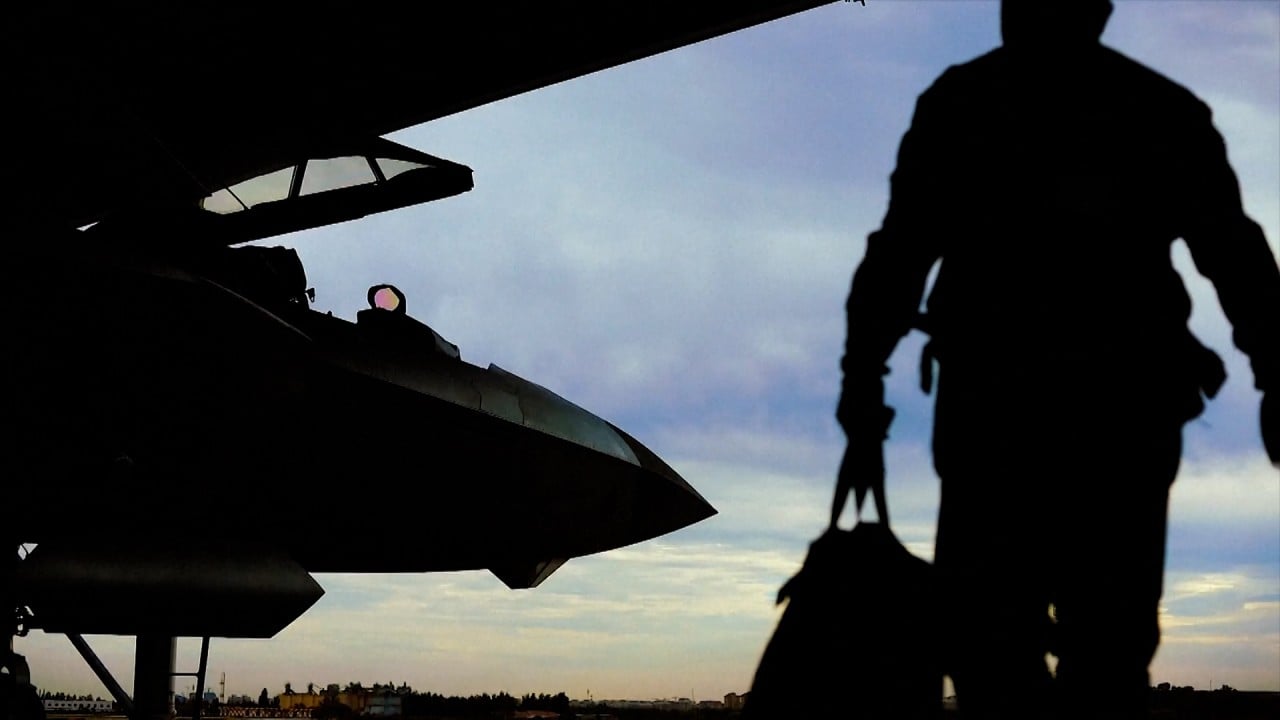
F-35 tops China’s threat list, beating older F-22: military study
- Ranking could have implications for how China develops its own technologies and tactics in response, researchers said
- Authors recommend a combination of ‘soft and hard kill’ capabilities to ward off incursions into Chinese territory
The researchers found that while both the F-22 and F-35 fighter jets posed a “significant” threat to Chinese defences at all stages of the operation, the F-35A was likely to be a more versatile and capable aircraft in any potential conflict in China’s home waters.
The team – led by Bao Junchen from the National University of Defence Technology in Hefei, Anhui province in eastern China, and the PLA’s Unit 31649 based in the southern province of Guangdong – recommended a two-prong approach to counter the threat.
China should develop its “soft kill” electronic warfare capabilities as well as physical weapons to provide a “hard kill” response, said the authors, whose affiliations add credibility to the study because of their direct knowledge of Chinese military strategy and tactics.
“The F-35A poses a greater threat than the F-22A due to its more advanced avionics systems and multirole capabilities,” the researchers said.
US plans new war-fighting concept in response to China, Russia threat
“Considering that [the F-35A] can be used both as a sensor for intelligence gathering and as a main escort for forward attacks, both soft kill and hard kill attack methods should be used against it.”
Crossing the line
The US military concept of a penetrating counter air operation is taken seriously by Beijing, which is investing heavily to develop its own military capabilities against Washington’s power projection in the Asia-Pacific region.
The HQ-9 missile system and J-20 stealth fighter are among a suite of advanced air defence systems developed by China to deter or defeat the US strategy, which is based on penetrating air defences and attacking high-value targets, such as airfields or command and control centres.
The US has a significant military presence in the region, including bases in Japan, South Korea and Guam, as well as carrier strike groups operating in the western Pacific.
The researchers said that by studying the threat posed by US operational aircraft such as the F-22 and F-35, Chinese military planners could better understand how to develop effective countermeasures and protect their own airspace.
F-22 vs F-35
The study also shed new light on the long debate on the F-22’s supposed superiority over the F-35, which could have implications for how China chooses to respond with its own military technologies and tactics.
The F-22, developed during the Cold War, is primarily an air superiority fighter with limited ground attack capabilities. It is faster than the F-35 and its unique design and materials mean its stealth capability is considered superior.
In contrast, the F-35 was designed as a multirole fighter, capable of performing a range of missions from air-to-air combat, air-to-ground strikes, and intelligence gathering.
The F-35 is also cheaper than its older counterpart, with a unit cost of around US$80 million compared to the F-22’s price of tag of around US$150 million each.
Killing them softly
To counter the F-35, Bao’s team said China should focus on developing advanced radar systems and electronic warfare capabilities combining soft and hard kill attack methods.
What do we know about China’s hi-tech Strategic Support Force?
Soft kill measures include non-lethal methods of disabling or disrupting an aircraft’s systems, such as electronic jamming or cyberattacks. The study suggested a need for new capabilities to disrupt the F-35A’s sensors and communications systems.
The authors said China should also develop its advanced air defence systems – such as the HQ-9 missile – to shoot down any encroaching F-35As, as part of its hard kill measures, which use physical weapons to destroy or disable aircraft.
Bomber threats
The study also recommended a multiple-domain coordinated warning and interception strategy to counter B-2 and B-1B bombers, which the researchers said would pose a significant rising threat as they penetrated further into Chinese territory.
The authors found both bombers constituted a significant threat from a distance of 300km (186 miles), which increased at 100km (62 miles) because of their enhanced ability to detect and engage targets.
B-21 bomber to enable quick US response but can’t elude PLA: analysts
The multiple-domain strategy would attack incoming bombers from the air, land, sea and space using several weapons platforms at the same time.
The researchers also considered the MQ-9 drone, which they found less threatening overall. However, they noted that more advanced drones – such as the XQ-58A and RQ-180 – should not be ignored.
AI not included
The authors did not use artificial intelligence – increasingly used in military applications – to evaluate the threat posed by each aircraft.
Instead, the study was based on a method called analytic hierarchy process (AHP), which breaks down complex decisions into smaller, more manageable parts and compares them.
While AI can quickly process large amounts of data, it may not always provide accurate results or take into account all relevant factors. The researchers said AHP allows a more nuanced evaluation.
The authors did not provide the raw data, probably because of its military sensitivity. However, without access to the underlying data and methods used, it is difficult for other researchers to verify the findings or build upon their work.



